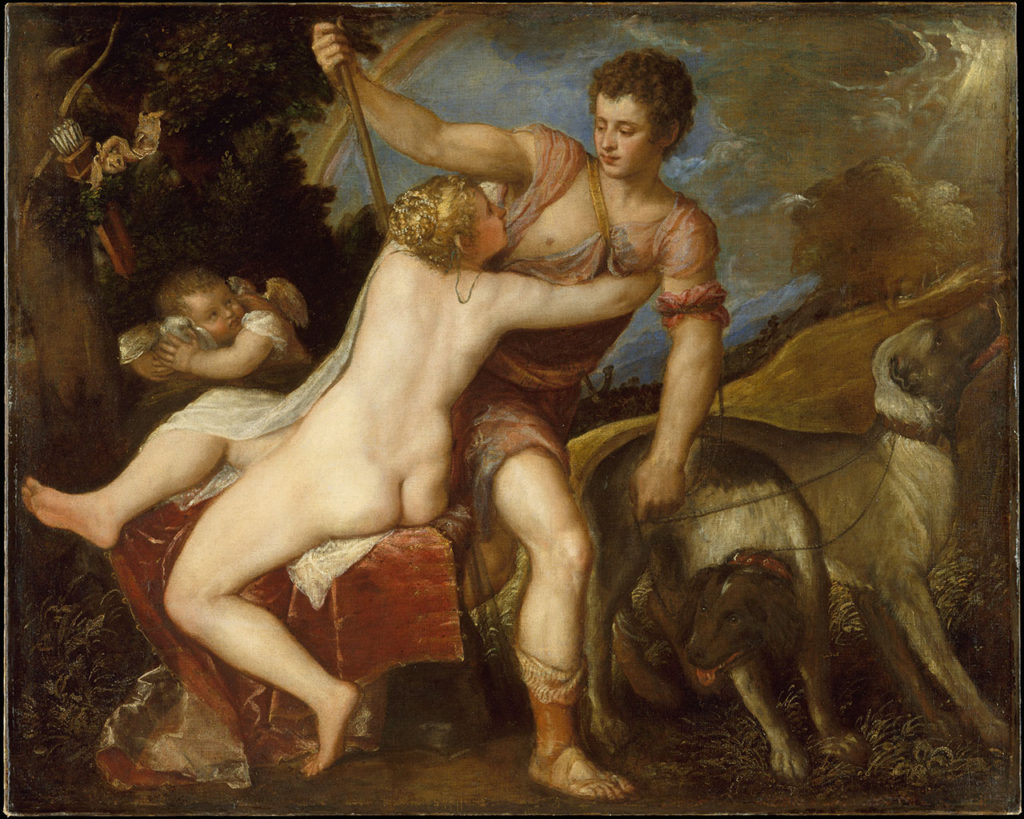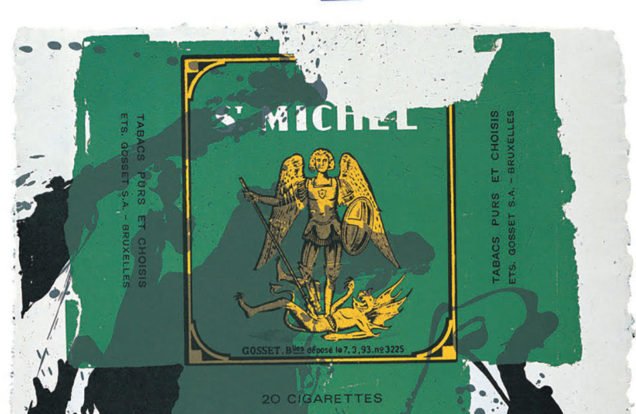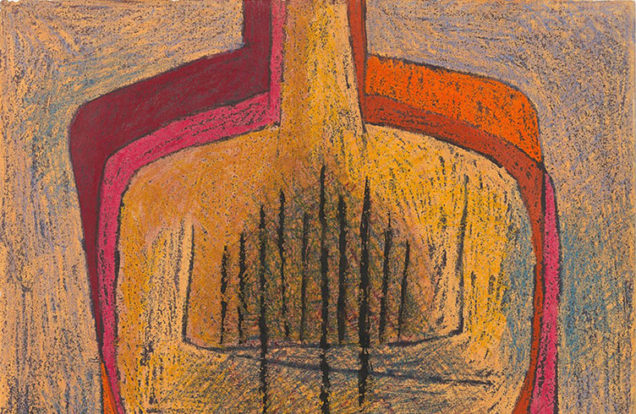Sex and War
Sensual Symbols of the Female Form In Times of War

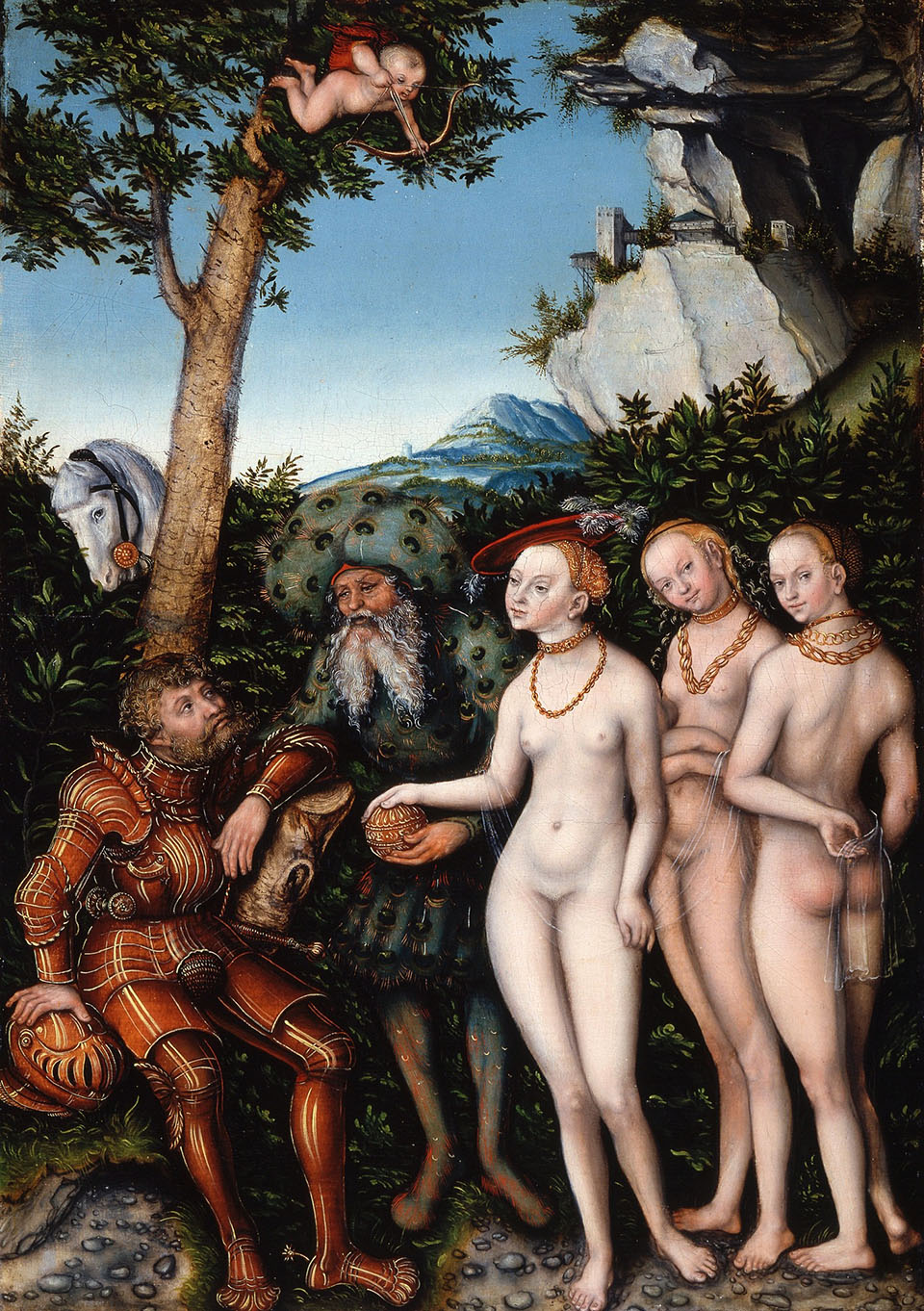
Since the beginning of time, the female form has been regarded as the epitome of beauty, the definition of “home” and the physical representation of desire. In the art world, the depiction of the nude woman goes as far back as ancient Greece. At the time, sculptures, engravings and paintings of nude men were made to portray athleticism and strength, while those of women were made to symbolize divinity, eroticism and fertility. Those same ideas were carried into the 1500s, when Renaissance art boomed in Rome, at the hands of the masters, Leonardo da Vinci, Michelangelo and Raphael. It also carried into the 1940s, when, during WWII, men spent months on end fighting for their country. It was then when the trend of “nose art” (paintings of gorgeous women on the noses of airplanes) became incredibly popular. While it was first used by army men as a way of identifying friendly units, it eventually became a way for the soldiers to express their individuality and evoke memories of peace, love and home.
The female nude is something that the creative world will never abandon, and while the trends within that world have changed over the years — and will continue to do so forevermore — the idea of women as symbols of sex and shelter will always be tied, among other things, to wartime art.
The Judgment of Paris (ca. 1528), Lucas Cranach the Elder, German
Painted around 1528, during the first Hessian War in Germany, this painting depicts Paris, dressed in a suit of armor, gazing at the three goddesses, Minerva, Venus, and Juno, to decide who is the fairest. Mercury stands nearby holding a golden apple and Cupid aims his arrow at Venus, suggesting Paris’s decision to choose the goddess of love.
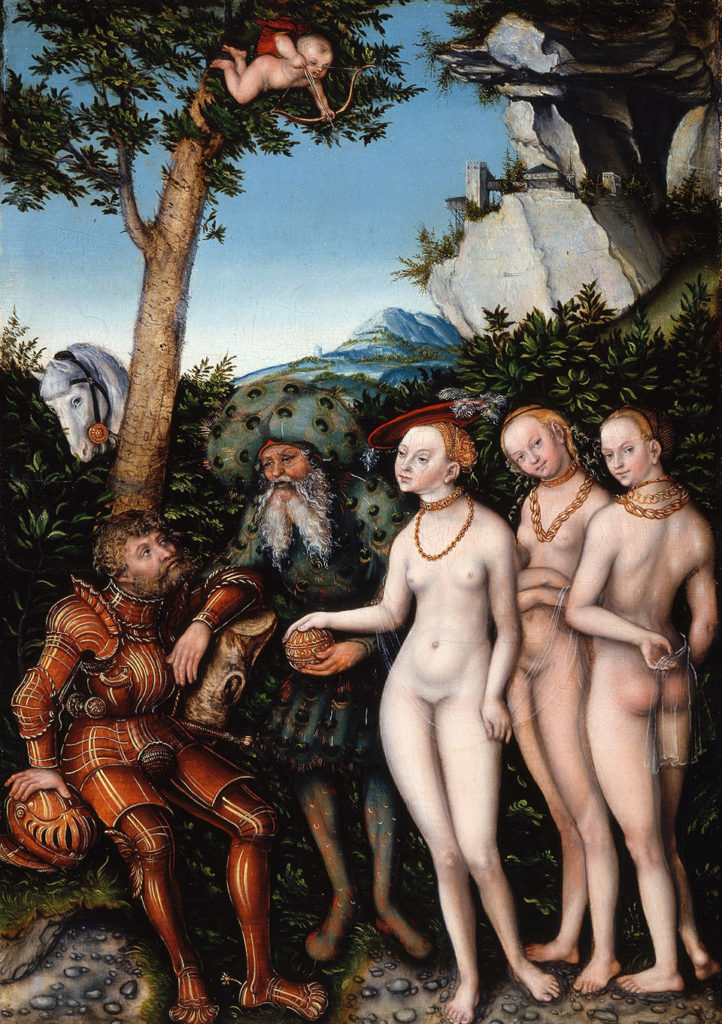
The Intervention of the Sabine Women (1799), Jacques-Louis David, French
In this painting, Jacques-Louis David depicts both women’s heroism and sensuality. It reflects a moment, after the abduction of the Sabine women by the Romans, when the Sabines attempted to get them back. In the piece, the legendary Hersilia, dressed in an angelic white dress, leaps between her father Tatius, the king of the Sabines, and her husband Romulus, the king of Rome, in an attempt to stop the bloodshed. Next to her, a nude mother shows her anguish while trying to protect her children, while another tries to cease the fighting by holding onto a warrior’s feet.
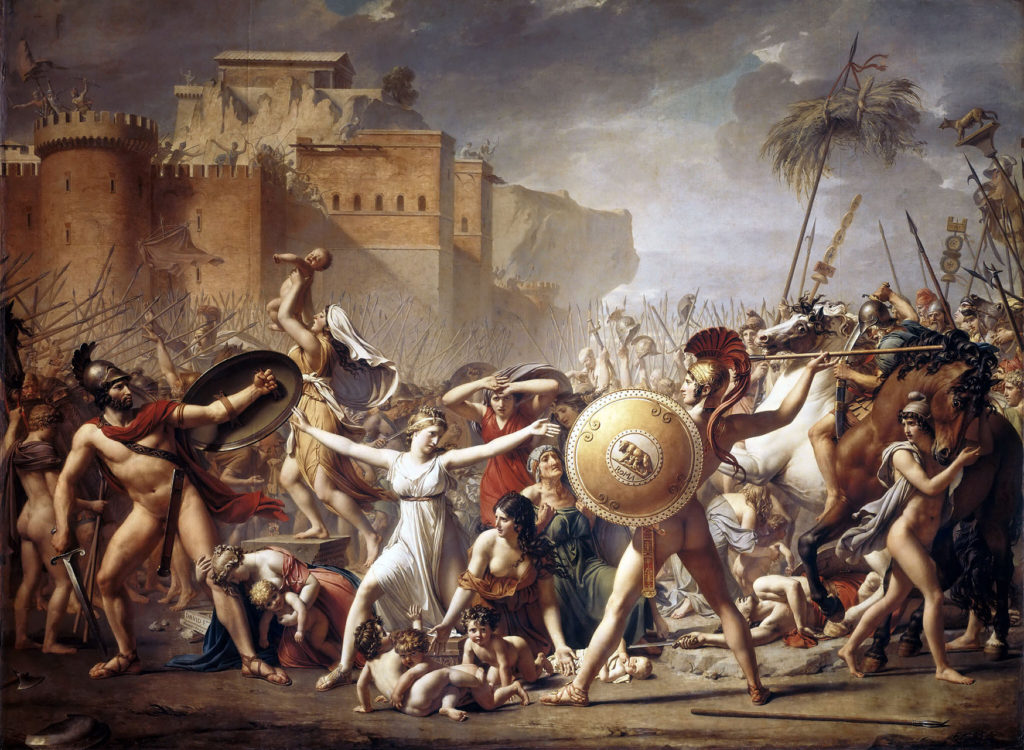
Roundel with Nude Woman Supporting a Heraldic Shield (ca. 1515–30), style of Jan Gossart (called Mabuse), Netherlandish
This painting on colorless glass made in Antwerp, South Netherlands, also depicts women’s strength and heroism in a time of war. It was around this time that women who were not goddesses began to be painted as independent warriors, not reliant on the men to save them from death.

Battle of the Naked Men (ca. 1470–90), Antonio Pollaiuolo, Italian
While most wartime nudes include women, this engraving by Antonio Pollaiuolo depicts a group of nude male warriors, or gladiators, fighting to the death. Art historians cannot agree on the true meaning behind the piece, or if it was meant to be sensual, but most agree that the artist created it to show the beauty and complexities of “the human body in a state of action, in varied poses, and from different angles,” (via The Metropolitan Museum of Art).
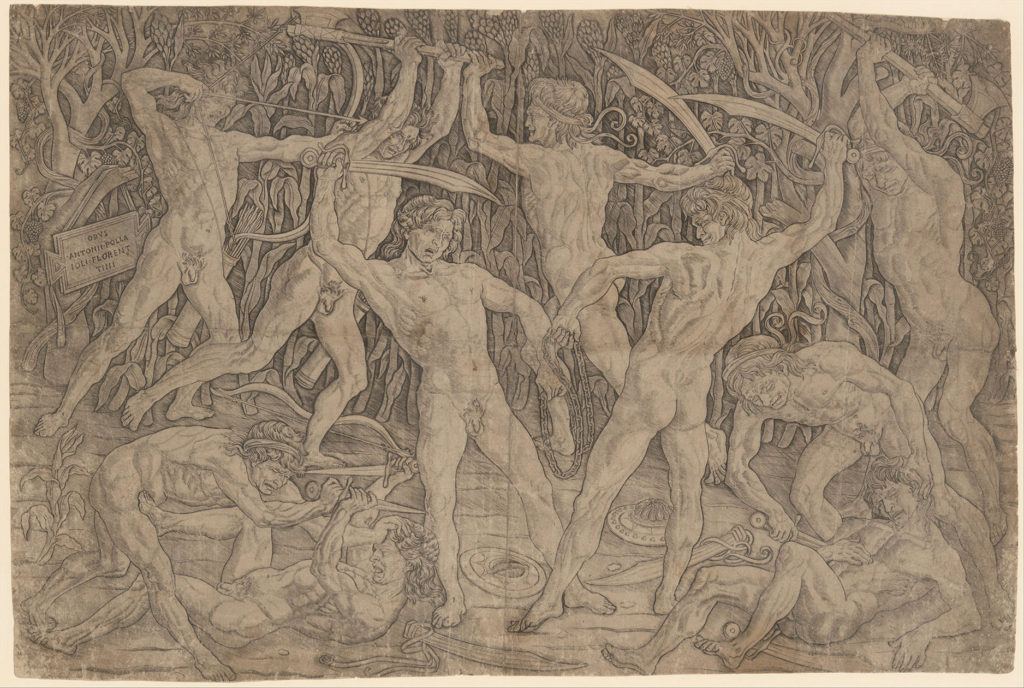
Venus and Adonis (1550s), Titian (Tiziano Vecellio), Italian
Titian, inspired by Roman poet Ovid’s narrative poem “Metamorphoses,” created this iconic painting, which depicts a worried Venus attempting to stop her lover, Adonis, from going to hunt. In the background, Cupid is seen looking frightened. Sadly, according to Greek mythology, Adonis died in the hunt after a wild boar, sent by his enemy Ares, attacked him and wounded his knee.
